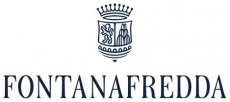Region: Piemonte

Like all good things, Fontanafredda is the product of a love story, between the first King of Italy, Vittorio Emanuele II, and Rosa Vercellana.
History
Establishment: The Fontanafredda estate is purchased by Vittorio Emanuele as a gift for “La Bella Rosina”, the woman he loved, and subsequently registered in the names of their children, Maria Vittoria and Emanuele Alberto Count of Mirafiore and Fontanafredda
1866: The first Barolo vineyard
The King purchases the first vineyard in Barolo, creating the name “Tenimenti di Barolo e Fontanafredda”, which appeared on the first bottles.
1870: The first vinification
The first wines are vinified in Fontanafredda’s cellars, although a Fontanafredda Barolo is mentioned from as early as 1867
1878:Count Emanuele Alberto
Count Emanuele Alberto establishes the winegrowing estate, with over 300 hectares cultivated directly by qualified staff paid specifically to do this job (unique for the time)
1886: The first transatlantic Barolo
The first Barolo is exported across the ocean
1887: The first concrete vats in Europe
The first concrete vats in Europe are installed in our cellars
1894: The death of Emanuele Alberto
Emanuele Alberto di Mirafiore, responsible for making Barolo a legend, dies. The man who made Fontanafredda a real village, with a church and a school, was succeeded by his second child, Gastone, who was still very young at the time
1918: Maximum expansion
Under the direction of Cavalier Mollo, the estate reaches its maximum expansion in terms of production and sales, with 200 employees and over 40 families residing on the estate.
1931: Phylloxera
Due to the devastation of the vines by a disease known as phylloxera, and to the Great American Depression, the land and the cellar were sold to Monte dei Paschi di Siena, a Tuscan bank, for the sum of 1,050,500 Italian Lira. The new owner named the winery after the location: Tenimenti di Barolo e Fontanafredda, while the “Casa E. di Mirafiore” label was purchased by the Gancia family, for 100,000 Lira.
1955: Cavelier Bressano
After the Second World War, the work of Cavalier Giuseppe Bressano, between 1950 and 1959, led to the development of an image of Fontanfredda as associated with high quality, strengthening the brand’s reputation
1959: The first sparkling wine
In 1959, Fontanafredda produced its first Contessa Rosa Metodo Classico, laying the foundations for today’s Alta Langa
1964: Barolo La Rosa
The first certified Cru Barolo La Rosa was made, separately vinifying the grapes from the vineyard of the same name
1988: The first Barolo Serralunga
The first Barolo Serralunga was made, with the indication of the municipality of origin on the label
2006: Fontanafredda becomes an olympic wine
At the 20th Olympic Winter Games in Turin. It was also around about this time that the raising of awareness of the need to pursue sustainability began
2008: The big change
Comes when Oscar Farinetti and Luca Baffigo purchase the estate and Fontanafredda returns under Piedmontese ownership, after 77 years
2012: Outstanding results
Barolo La Rosa 2008 is included in Wine Spectator’s “Top 100 Wines”
2015: Towards sustainability
The process of converting all the estate’s vineyard’s to Organic Farming techniques begins
2017: European winery of the year
Fontanafredda becomes “European Winery of the Year” for the prestigious American magazine Wine Enthusiast and inaugurates the “Storytelling Village”
2018: A return to organic methods
Fontanafredda’s 160th birthday coincides with the first certified organic harvest
2018: New wines on the podium
With scores of 95 from Wine Spectator for Barolo Proprietà 2013, the first vintage produced, and of 94 points from Wine Enthusiast Editor’s Choice for Barolo Serralunga 2015
2020 marked the birth of a new Fontanafredda, better than before and more respectful of our planet. After much thought about how to create new opportunities, the need for a change of perspective emerged: 500 years after the first Italian Renaissance, we now have the Green Renaissance.